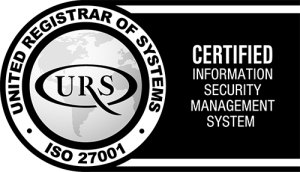What is congenital muscular dystrophy?
Congenital muscular dystrophy (CMD) does not just encompass one disease but a group of inherited neuromuscular conditions that usually display symptoms at birth or in early infancy. All congenital muscular dystrophies affect the muscles, but a few also affect the brain resulting in both muscle weakness and cognitive impairment. There are many subtypes of CMD including: Collagen 6-CMD (Bethlem, Intermediate and Ullrich), LAMA2-CMD, alpha-Dystroglycanopathies (WWS, MEB, Fukuyama, LGMD), SELENON-related myopathy and LMNA-CMD.
What causes congenital muscular dystrophy?
CMDs are caused by genetic mutations that affect important muscle proteins. Most forms of CMD are inherited in an autosomal recessive pattern which means that two copies of the mutated gene are required to result in the disease. However, dominant cases, mostly derived from the novo mutations with dominant-negative effect are also observed.
Many CMDs are caused by mutations that affect proteins that form a key part of the complex scaffolding – called the extracellular matrix (ECM) – that supports the cells of our body including muscle. The loss of these types of proteins e.g. glycoproteins, (or the enzymes that create them) as well as Collagen 6 and LAMA2 can interfere with normal muscle function, but it is still unclear why CMDs cause muscle weakness earlier than other types of muscular dystrophy.
What are the signs and symptoms of congenital muscular dystrophy?
As people with CMDs usually display symptoms from birth or early infancy, a child may display muscle weakness (usually identified as hypotonia) or a lack of muscle tone which may make an infant seem ‘floppy’. Infants and toddlers may then have difficulty meeting motor milestones such as rolling, sitting, or walking.
Some of the subtypes of CMD may be accompanied by cognitive impairment, visual impairments (in MEB for example), and seizures as the function of the brain can be affected. These complications are usually evident in the first year of life, and severity is variable. Sooner or later, most forms of CMD will present breathing and feeding issues as well as joint and spinal contractures due to an increase in muscle weakness.
How does the disease progress?
The severity of CMDs varies significantly from one person to another and from one subtype to another, therefore, it is important to focus on care that allows patients to achieve goals within their capability.
Some children will be able to walk, although this may be delayed, and those who are able to walk may not be able to later in life due to growth and the dystrophic (progressive) nature of the condition.
For more specific information on all CMD subtypes, please visit the Cure CMD webpage.

